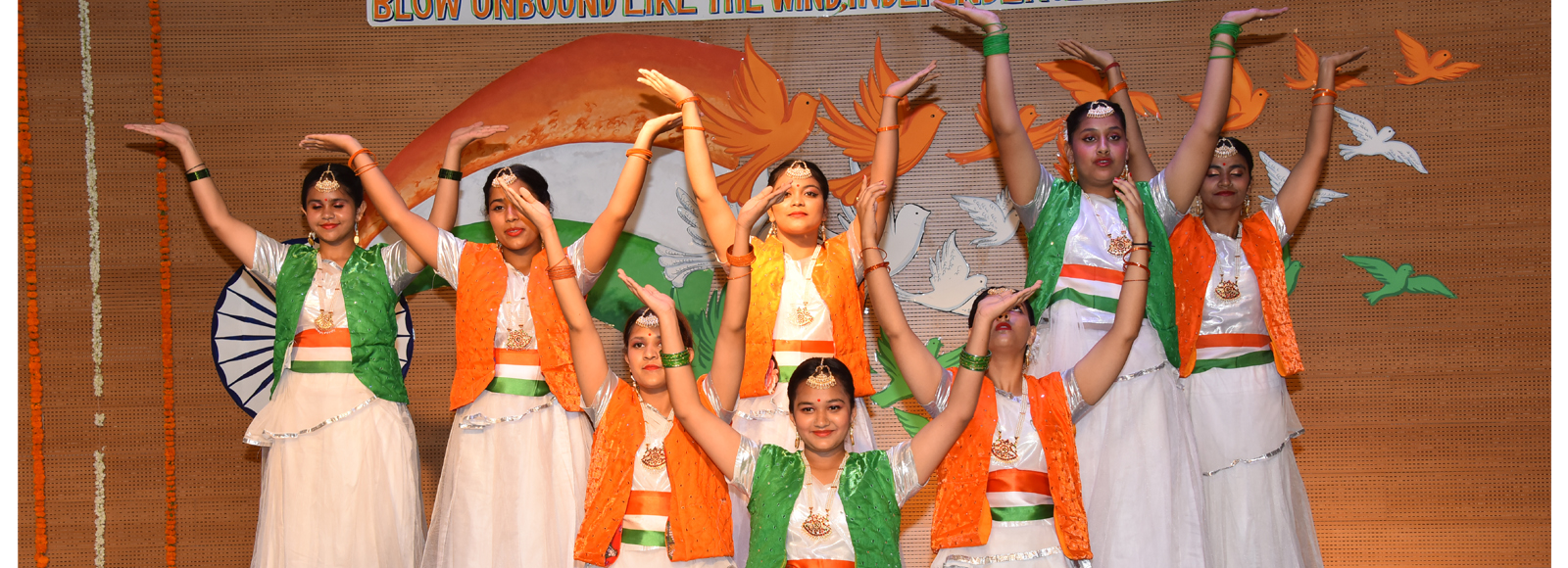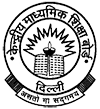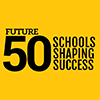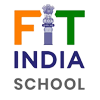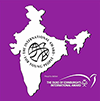“The English Language is a work in progress forever. Have fun with it.”- Jonathan Culver
A two-year curriculum for classes IX and X designed by the CBSE is followed at the secondary level. The overall aims of the course are to enable the learner to communicate effectively and appropriately in real-life situations; to use English effectively for study purposes across the curriculum; to develop and integrate all the components of language.
Reading Component: Aims to enable the students to adopt different strategies for different types of text; understand relations between different parts of a text through lexical and grammatical cohesion devices; analyse, interpret and infer the ideas in the text; retrieve and synthesize information from a range of reference material, using study skills such as skimming and scanning
Writing Component: Its objective at this level is to ensure that the students are able to express ideas in clear and grammatically correct English, using appropriate punctuation and cohesion devices while writing in a style and diction appropriate for communicative purposes.
Listening Component: Is given due emphasis in order to enable the students to use linguistic and non-linguistic features of the context as clues to understand and interpret what is heard; distinguish main points from supporting details, and relevant from irrelevant information; understand and respond appropriately to directive language, e.g., instruction, advice, requests and warning.
Speaking Component: The objective is to enable the students to speak intelligibly, using appropriate word stress, sentence stress and intonation patterns; narrate incidents and events, real or imaginary in a logical sequence; present oral reports or summaries; express a point of view clearly and effectively; take active part in group discussions, and participate in spontaneous spoken discourse in familiar social situations.
Grammar Component: The integrated approach enables the students to use the following accurately and appropriately in context: Verbs, Tenses, Sentence Structure, connectors, types of sentences, types of phrases and clauses ,indirect speech comparison , nominalization , determiners, pronouns, prepositions etc. It is not dealt with in isolation. It is contextually related with all other areas of language.
Literature Component: Considerable emphasis is given on developing in students the ability to understand, interpret and respond to features in a literary text like character, plot/story/theme/setting as seen through time and place, socio-economic and cultural background. Cognitive functions like recalling, reasoning, appreciating, applying literary conventions, extrapolating, illustrating and justifying etc. are also integral to the literature component.
"हिंदी हमारे राष्ट्र की अभिव्यक्ति का सरलतम स्रोत है।" सुमित्रानंदन पंत
कक्षा IX
कक्षा नौ में विद्यार्थी गद्य की विभिन्न विधाओं, जैसे - कहानी, निंबध, संस्मरण, तथा विज्ञापन एवं व्यंग्य आदि के बारे में तथा विज्ञान एवं व्यंग्य आदि के बारे में पढ़ेंगे । लिखित सामग्री को पढ़कर वांछित सूचना प्राप्त करने के लिए उसका विश्लेषण कर सकेंगे। काव्य खंड के अंतर्गत हिंदी के विशिष्ट एवं नए कवियों की रचनाओं का आनंद लेते हुए उनकी कृतियों से भाव तथा अर्थ ग्रहण करते हुए काव्य सौदंर्य से भी परिचित हो सकेंगे।व्याकरण के व्यावहारिक पक्ष पर अधिक बल देते हुए वे नियमों की पहचान करेंगे तथा सामासिक शब्द, उपसर्गो, प्रत्ययो के माध्यम से बनने वाले नवीन शब्द, काव्य में प्रयुक्त अलंकारों से परिचित होंगे। वाक्य भेद, पत्र - लेखन तथा निबंध-लेखन द्वारा संप्रेषण की प्रभावशीलता में वृद्धि करेंगे, साथ ही सहायक पुस्तिका के माध्यम से जीवन जगत से जुड़े अनुभव तथा रोचक प्रसंगों से परिचित होंगे।
कक्षा X
कक्षा दस में विद्यार्थी विविध साहित्यिक विधाओं में प्रयोग की गई लिखित भाषा की शैलियों की पहचान कर उनका विश्लेषण करने के लिए प्रवाहपूर्ण पढ़ सकेंगे। उसके उद्देश्यों , संरचनाओं, और विशिष्ट तत्वों की पहचान कर सकेंगे। श्रव्य - दृश्य साधनों के उपयोग से विविध प्रकार की रचनाओं का पठन और निर्माण कर सकेंगे। सूर, तुलसी जैसे महान कवियों के माध्यम से जहाँ एक ओर परंपरागत छंदों में काव्य सौंदर्य करना सीखेंगे वहीं आधुनिक कवियों की विभिन्न शैलियों में मुक्त छंद के द्वारा अर्थ व भाव ग्रहण करेंगे।
व्याकरण के व्यावहारिक पक्ष पर ज़ोर देते हुए उन्हें पद - परिचय, वाच्य, वाक्य-भेद आदि से परिचित कराया जाएगा, वहीं सार - लेखन, पत्र, लिखन में वे अपने शब्द भंडार और भाषायी दक्षता का परिचय देंगे। सहायक पुस्तिका के माध्यम से यात्रावृत्त, अंचल भाषा तथा संस्मरण जैसी विधाओं का परिचय दिया जाएगा।
विद्यार्थी विद्यालय में आने से पहले ही भाषा की विषेषताओं, संरचनाओं आरै जटिलताओं को अपनाकर उसका उपयोग रोज़मर्रा की चुनौतियों को समझने और सुलझाने में करते हैं |समृद्ध भाषिक परिवेशों और समय के साथ-साथ बच्चो का भाषा और उसके संसार के प्रति दृष्टिकोण और प्रगाढ़ हो जाता है। द्विभाषी क्षमता ज्ञानात्मक वृद्धि, सामाजिक सहिष्णुता, विस्तृत चिंतन तथा बौद्धिक उपलब्धियों के अवसर बढ़ा देती है।
हिंदी भाषा विभिन्न रूपों में विद्यार्थी को व्यक्तिगत, सामाजिक तथा शैक्षिक स्थितियों में हिंदी में सफलतापूर्वक संप्रेषण करना सिखाएगी। विभिन्न दृश्य, श्रव्य साधनों, गतिविधियों, वाद - विवाद, भाषण आदि के द्वारा विद्यार्थी का सर्वांगीण विकास संभव होगा।
"Besides language and music, mathematics is one of the primary manifestations of the free creative power of the human mind." -- Hermann Weyl
Class IX topics include: Concept of rational , irrational numbers , real numbers and their decimal expansions ,laws of exponents for real numbers . Polynomials in one variable , zeroes of a polynomial, remainder theorem, factor theorem , factorization of polynomials , algebraic identities system . Solution and graph of a linear equation in two variables. Plotting points in the Cartesian plane. Introduction to Euclid’s geometry, lines and angles, angle sum property of a triangle , congruence of triangles , inequalities in a triangle , quadrilaterals, properties of a parallelogram , mid-point theorem , areas of parallelograms and triangles , properties of circles , constructions of triangles . Area of a triangle – by Heron’s formula , surface areas and volumes ( cube , cuboid , right circular cylinder , right circular cone , sphere) . Graphical representation of data , measures of central tendency ,histograms , frequency polygons. Repeated experiments and observed frequency approach to probability. Focus is on empirical probability.
Class X topics include: Euclid’s division lemma, the fundamental theorem of arithmetic, irrational numbers. Geometrical meaning of the zeroes of a polynomial , relationship between zeroes and coefficients of a polynomial , division algorithm for polynomials , solving pair of linear equations in two variables (substitution Method , elimination method , cross-multiplication method ) , quadratic equations -roots ,nth term and sum of first n terms of arithmetic progressions . Criteria for similarity of triangles, areas of similar triangles, Pythagoras theorem , tangent to a circle , dividing a line segment, construction of tangents to a circle , distance formula , section formula , area of a triangle . Trigonometric ratios of some specific angles, trigonometric ratios of complementary angles , trigonometric identities , heights and distances . Areas of sector and segment of a circle , areas of combinations of plane figures , surface area and volume of a combination of solids , conversion of solid from one shape to another ,frustum of a cone . mean, median and mode of grouped data , graphical representation of cumulative frequency distribution , probability (simple problems on single events).
The aims of teaching Science at Secondary School level are to foster a friendly and stimulating environment in which students acquire skills in experimentation, construction and observation; expertise in handling and arranging scientific instruments; to acquaint students with scientific methods; to enable them to develop a scientific attitude. Students are motivated to reach high standards and acquire real insights into science, while gaining confidence in their own abilities.
In standard XI, students understand matter: its nature & behavior, motion, force & gravitation, organization in the living world, improvement & management of food.
In standard X, students explore world of living, chemical substances & natural resources, develop the concepts of light and the effect of current.
At the secondary stage, the Social Sciences comprise History, Geography, Sociology, Political Science and Economics. The focus will be on Contemporary India, and the learner will be initiated into a deeper understanding of the social and economic challenges facing the nation. In keeping with the epistemic shift proposed, these will be discussed from multiple perspectives, including those of the SC and ST and disenfranchised populations. Efforts are made to relate the content as much as possible to the children's everyday lives.
In History, India's freedom movement and other aspects of its Modern History can be studied, as well as significant developments in other parts of the world. History is taught with the intent of enabling students to get a better understanding of their own world and identity; how it came into being as shaped by a rich and varied past. History should now help them discover processes of change and continuity in their world, and help them compare ways in which power and control are exercised.
Geography is taught keeping in mind the need to inculcate in the child a critical appreciation for conservation and environmental concerns along with developmental issues.
In Political Science, the focus is on understanding the philosophical foundations that underlie the value framework of the Indian Constitution, i.e. in-depth discussions on equality, liberty, justice, fraternity, secularism, dignity, plurality, and freedom from exploitation.
As the discipline of Economics is being introduced to the child at this level, it is important that the topics should be discussed from the perspective of people.
At secondary stage in class IX to X, Programming using NetBeans IDE enables pupil to understand the use of editor for programming and Integrated Development Environment which facilitate the learning about the various controls of Java with their properties and methods enabling them to develop real life applications. Office Suite software like Word Processors, spreadsheet and Presentation tools enables them to create project report and presentations for their inter-disciplinary projects as part of CCE.
For Homework Schedule – Click Here
For List of Books Prescribed – Click Here
Declaration duly signed by the Principal – Click Here


